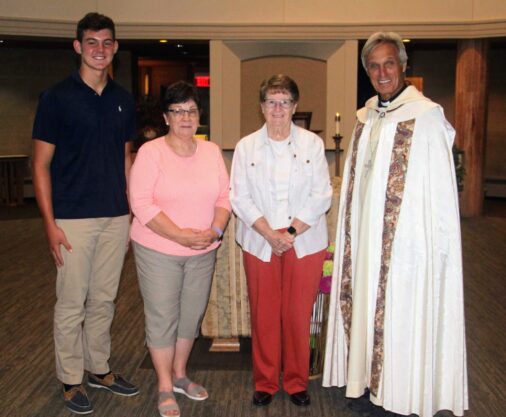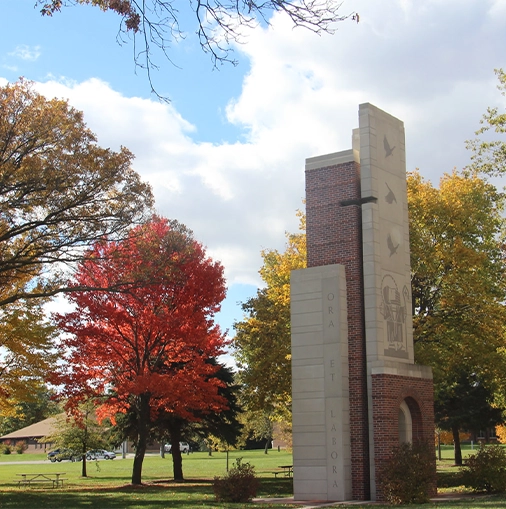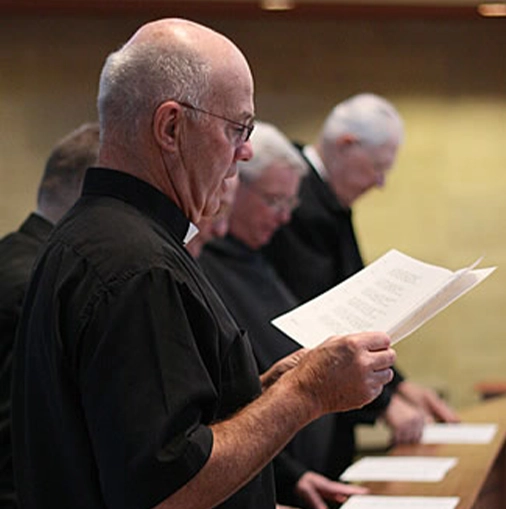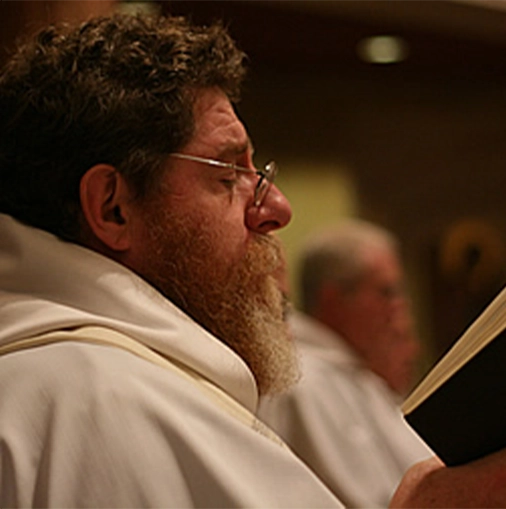OBLATES
Find information about Mount Michael Oblates on this page.

OBLATES OF SAINT BENEDICT
Literally translated, an “oblate” is an offering, or someone who offers himself or herself to God.
In the world today, Oblates of St. Benedict are everyday people who seek to live extraordinary lives of devotion. Because Oblates of St. Benedict offer themselves for the service of God in their everyday lives, in so far as their station in life permits, they come from and continue to live out their faith in all walks of life. They might be farmers, office or industrial workers, homemakers, students, bankers, health care workers, lawyers or teachers. They may be Catholic or non-Catholic, young or old.
Oblates take no binding vows, but they dedicate themselves in a special way to live as balanced Christian people, offering witness to the world of Christ’s transformative power. What sets them apart from other devoted Christian people is their special way of living out an enriched Christian life, according to the Gospel as reflected in the Rule of St. Benedict.
Daily Liturgy of the hours
Learn more about Oblates in the tabs below
St. Benedict lived in Italy the sixth century. He pursued his education in Rome for a time, but it wasn’t long before he abandoned his studies and hectic city life to live as a hermit near the town of Subiaco. Word began to spread about his holiness and miracles. As people flocked to join him in his religious devotion, Benedict established monastic communities at Subiaco, Terracina, and Monte Cassino. While at Monte Cassino, he wrote a Rule for his monastics to follow.
Monastic “Rules”, or guidelines for life in community, were rather common in the early centuries of Christianity. Some endure to this day. Many were harsh and demanded extreme exercises of asceticism, self-denial and external displays of piety. St. Benedict’s Rule was unusual in its relatively gentle exhortations, its emphasis on moderation and its common-sense instruction in how to live a practical, faithful Christian life.
One remarkable aspect of the Rule of St. Benedict is its decidedly scriptural tone. Well-versed in both the Old and New Testaments, Benedict breathed into every section of his Rule the tone and spirit of Holy Scripture. The durability and flexibility of the Rule over the centuries rises from its Biblical roots and its resulting authoritative character.
St. Benedict placed special emphasis on the dynamic balance of work, rest and prayer in living an empowered Christian life. Other values at the center of the Rule include regular prayer, reading of the Psalms, moderation, stability, obedience, and ongoing conversion of heart. Benedictine monastics and oblates still embrace these values today, pondering their significance and through them growing closer to Christ in their everyday lives.
Oblates of St. Benedict are not expected to view the Rule as a concrete set of directions for their daily life. Rather, each Oblate is urged to interpret the Rule prayerfully and actively in relation to his or her own life situation and personal spiritual journey.
You can read the full text of the Rule of St. Benedict here (provided by St. John’s Abbey, Collegeville, MN):
RULE OF ST. BENEDICT
While some people devoted themselves as monks and nuns to full-time Benedictine life, lay persons sought ways to develop special associations with and devotion to these monastic communities. One solution was for lay persons to become Oblates, by promising to regulate their lives according to the Spirit of St. Benedict. They shaped their daily lives to varying degrees around the teachings of the Rule and a special concern for their particular monastery or convent. Men, women, children, and even entire families found the rewards of special devotion to God through their “offering” of themselves as Benedictine Oblates.
Interested persons explore the option of becoming an Oblate of St. Benedict by contacting the Oblate Director at a specific monastery or convent. They do not take on a required, new set of religious practices, but spend a time of preparation (usually a year) as Oblate Novices, learning about Benedictine values and life, through self-directed reading, discussions, study and prayer.
After that year, Novices have the option to proceed with an act of Oblation — a rite approved by the Church — and so become Oblates of St. Benedict. This commitment affiliates them with a particular Benedictine community and indicates their commitment to a Benedictine spiritual path, as they see fit for their particular station in life. This promise is not a binding vow as monastic vows are binding but is to be taken with seriousness, humility and sacred intent.
Anyone interested in learning more about Benedictine Oblates at Mount Michael should contact our oblate director, Br. Jerome Kmiecik at 402-289-2069.
There are many thousands of oblates around the world carrying the values and teachings of the Rule of Benedict into their family lives, their churches of various denominations, their workplaces, and their community activities. They work and pray, and pursue lectio divina (sacred reading and study) in connection with Benedictine men and women of their associate communities. Often times, if living near enough, they join the community physically for prayer, work, and recreation. In summary, Oblates receive spiritual strength and inspiration from their commitments as Oblates of St. Benedict.
At Mount Michael, Oblate spirituality is supported by an Oblate Director, who provides direction and instruction through email, monthly meetings, and our website. The monthly meetings at the Abbey are offered for Oblates, and attendance is encouraged for those who live nearby. Local Mount Michael Oblates regularly volunteer at various charitable organizations including the Francis House in Omaha, a shelter and place meals are offered to people who are experiencing homelessness.
Those Oblates who live far away usually find some other opportunity for service. Oblates from far and wide are always welcome to join the monastic community in the Liturgy of the Hours and daily Eucharist in the Abbey Chapel, whenever they are in our area.
CONTACTS
Oblate Director
Bro. Jerome Kmiecik, O.S.B.
402-206-2069 (Abbey)




